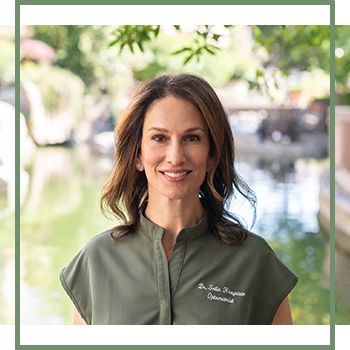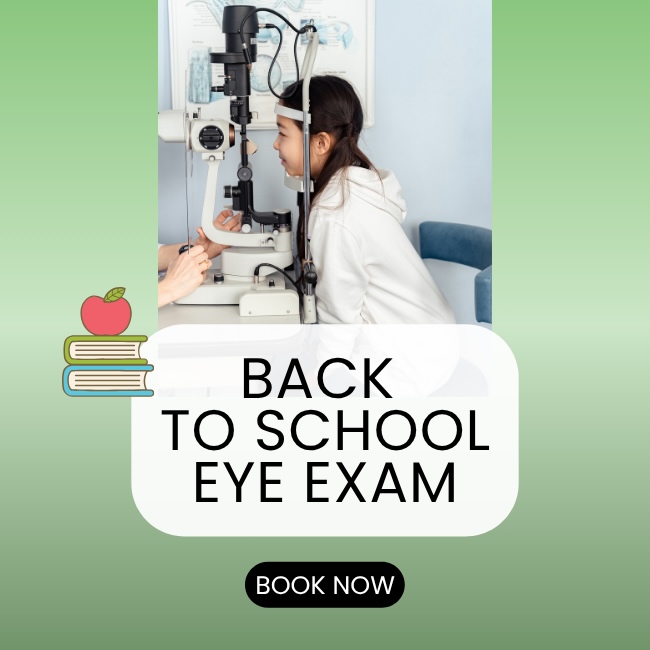Imagine waking up each morning to a world in focus, without needing to reach for your glasses or fumble with contact lenses. This freedom is possible through an innovative, non-surgical approach to vision correction. It allows you to move through your day with clear sight, completely unassisted.
Corneal refractive therapy is a non-surgical treatment that uses custom-designed contact lenses worn overnight to gently reshape your cornea, giving you clear vision during the day without glasses or daytime contacts. This process, also known as orthokeratology or ortho-k, can help manage nearsightedness. It provides a flexible and reversible option for visual freedom.
A Clearer View Without Daytime Glasses and Contacts
Corneal refractive therapy, or CRT, is a way to correct nearsightedness without the need for surgery. The science behind CRT is straightforward yet effective. The custom lenses apply gentle pressure to your cornea as you sleep. This process temporarily alters the cornea’s shape, which helps it focus light correctly onto the retina.
When you wake up, you simply remove the lenses. You can then enjoy clear vision throughout the day without needing your glasses or daytime contacts. This makes it an appealing choice for active individuals who prefer not to wear corrective lenses during their waking hours.
Could CRT Be the Right Choice for You?
A consultation with an optometrist in Danville can help determine if CRT is a suitable option for your specific vision needs. This therapy may be a good option for you if you want to be free from glasses or contacts during the day. It can also be suitable if you experience discomfort with traditional soft contact lenses or are not a candidate for a surgical procedure.
CRT is designed to help with symptoms of nearsightedness, which can include:
- Blurred vision when you look at distant objects
- A frequent need to squint or blink to see clearly
- Headaches from eye strain
- Difficulty with vision while driving at night
What to Expect from Your CRT Treatment
Beginning CRT involves a few simple steps. Your eye doctor will guide you through the process, from the initial evaluation to your daily lens care routine. The goal is to make the transition as smooth as possible.
The Custom Fit Process
CRT lenses are never one-size-fits-all. Your optometrist first maps the unique surface of your cornea using modern technology. This detailed map allows us to create a pair of lenses designed specifically for the shape of your eyes.
Your Timeline for Results
Many people notice an improvement in their vision after just the first night of wear. For the full corrective effect, it can take up to 2 weeks of wearing the lenses each night. Your eye doctor will monitor your progress to help you achieve your desired outcome.
The Permanence of CRT Correction
The vision correction from CRT is temporary and reversible. Your clear daytime vision is maintained as long as you continue to wear the lenses overnight as directed. If you ever decide to stop, your cornea will return to its original shape, and your vision will revert to how it was before treatment.
Common Questions About Corneal Refractive Therapy
It’s natural to have questions when you consider a new type of vision therapy. We want you to feel informed about your eye care options. Here are some answers to common questions about CRT.
How’s Your Vision While Wearing the Lenses?
You can see clearly while you are wearing the lenses. Although they are designed for overnight wear, they still correct your vision when they are in your eyes. This means you can put them in before bed and still read or watch television.

Is CRT a Good Option for Children and Teens?
CRT is an option for people of many ages, and it can be a great choice for active kids and teens who participate in sports or other activities where glasses can be a hindrance. There are no age restrictions on its FDA approval for overnight wear.
How Does CRT Compare to LASIK?
CRT offers a non-surgical and reversible alternative to a procedure like LASIK. People who use CRT can still choose to have LASIK in the future if they wish. However, those who have already had LASIK are not typically candidates for CRT.
Discover If You’re a Candidate for CRT Therapy
If you’re curious about a life with less dependence on daytime corrective lenses, we’re here to help you explore your options. An experienced optometrist in Danville can perform a comprehensive evaluation to see if you are a candidate for this therapy. Contact Visual Expressions Optometry today to schedule your consultation.




